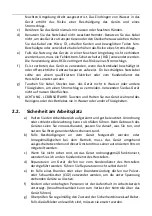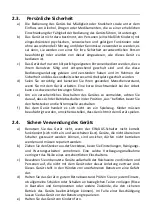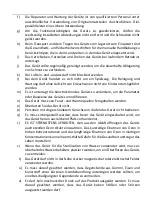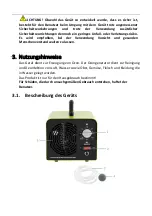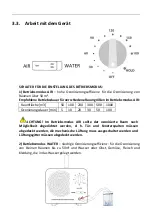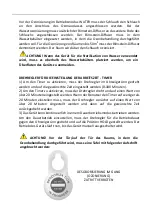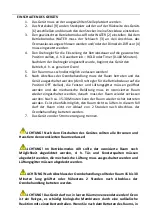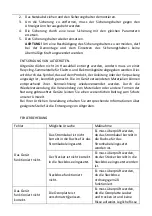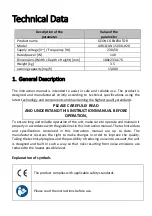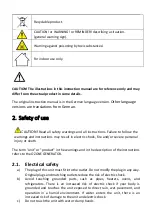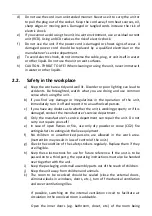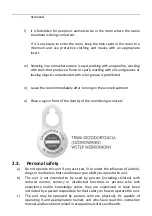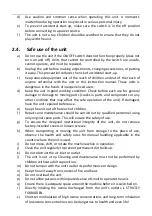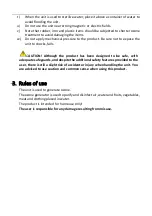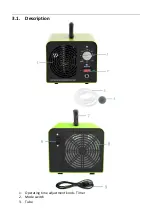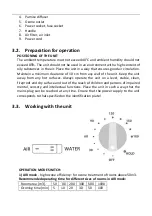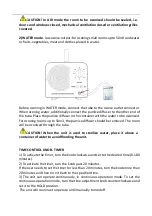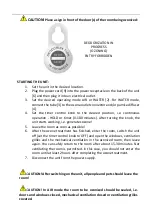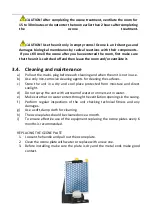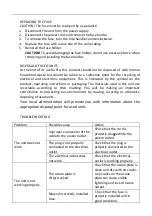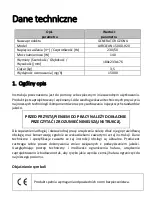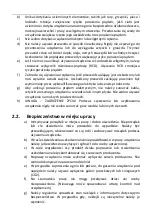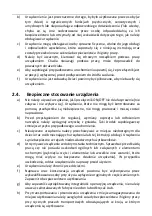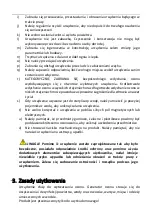
d)
Do not use the cord in an unintended manner. Never use it to carry the unit or
to pull the plug out of the socket. Keep the cord away from heat sources, oil,
sharp edges or moving parts. Damaged or tangled cords increase the risk of
electric shock.
e)
If you cannot avoid using the unit in a wet environment, use a residual current
unit (RCD). Using an RCD reduces the risk of electric shock.
f)
Do not use the unit if the power cord is damaged or shows signs of wear. A
damaged power cord should be replaced by a qualified electrician or the
manufacturer's service department.
g)
To avoid electric shock, do not immerse the cable, plug, or unit itself in water
or other liquid. Do not use the unit on wet surfaces.
h)
CAUTION - THREAT TO LIFE! When cleaning or using the unit, never immerse it
in water or other liquids.
2.2.
Safety in the workplace
a)
Keep the work area tidy and well lit. Disorder or poor lighting can lead to
accidents. Be foresighted, watch what you are doing and use common
sense when using the unit.
b)
If you find any damage or irregularities in the operation of the unit,
immediately turn it off and report it to an authorized person.
c)
If you have any doubts as to whether the unit is working properly or if it is
damaged, contact the manufacturer's service department.
d)
Only the manufacturer's service department can repair the unit. Do not
carry out repairs yourself!
e)
In case of open flames or fire, use only dry powder or snow (CO2) fire
extinguishers to extinguish the live equipment.
f)
No children or unauthorized persons are allowed in the work area.
(Inattention may result in loss of control of the unit.)
g)
Check the condition of the safety stickers regularly. Replace them if they
are illegible.
h)
Keep these instructions for use for future reference. If the unit is to be
passed on to a third party, the operating instructions must also be handed
over together with the unit.
i)
Keep the packaging and small assembly parts out of the reach of children.
j)
Keep the unit away from children and animals.
k)
The room to be ozonized should be sealed (close the external doors,
eliminate leaks in windows, doors, etc.), turn off mechanical ventilation
and cover ventilation grilles.
If possible, switching on the internal ventilation circuit to facilitate air
circulation in the ozonized room is advisable.
Open the inner doors (e.g. bathroom, closet, etc.) of the room being

